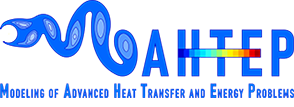Assessment of the use of Triply Periodic minimal Surfaces as heat sinks for a divertor tile in nuclear fusion reactor
Activity carried out by:
Eleonora Gajetti & Cecilia Piatti (tutored by Prof. Laura Savoldi) in collaboration with MuSyChEn Group @ PoliTO and Prof. Luca Marocco @ PoliMI.
Alessio Quamori Tanzi (tutored by Prof. Laura Savoldi) in collaboration with ENI S.P.A. (company tutor Antonio Trotta).
Objective of the activity:
Design and optimization of Triply Periodic Minimal Surfaces as heat sinks for the cooling of high heat-flux components in fusion reactors.
Framework of the activity:
In nuclear fusion reactors such as tokamaks and stellarators, the plasma confined by magnetic fields interacts with the wall in dedicated targets called divertors, made of several modular tiles. The divertor tiles of W7-X, the largest stellarator worldwide [1], [2], will withstand heat fluxes up to . Similar values are expected also in ITER and beyond [3], [4]. Thus, the exploration of innovative enhanced heat removal systems is required.
Structured porous media have been proved to be a good option for this purpose due to their huge heat exchange area as well as the small pressure drops even with high flow rates. They are very attractive due to their good mechanical properties and the possibility of tailoring the design on the specific needs of the application. In particular, Triply Periodic Minimal Surfaces (TPMS) have encountered increasing interest in the last few years, as they can be produced with Additive Manufacturing with base-size up to 5 centimeters with good results. They are three dimensional mathematically-defined smooth surfaces with average null curvature, that split the volume in two or more regions. The structures generated from these surfaces have been proved to be suitable for heat management as they provide a high ratio between the heat transfer area and the occupied volume. Several studies of forced convection inside TPMS-based structures have been published in recent years, especially in the field of heat exchangers, quantifying the performance enhancement with respect to traditional designs, both experimentally and computationally.
In 2022, the W7-X divertor department, after substituting the old uncooled graphite test divertor, started plasma experiments with a water-cooled plasma-facing wall including a CFC-based divertor. In 2021, was launched another parallel project to develop a water-cooled W-based divertor.[6]
The divertor of W7-X is made of units. Every unit comprises three vertical and nine horizontal target modules made of tiles (Figure 1). The goal of the project is to design a tile that can sustain 10 MW/m^2 without water boiling. Considering the estimates on the operating conditions, the maximum mass flow rate available for a module is 10 (kg/s) with 10 (bar) imposed at the outlet, and a maximum pressure drop of 15 (bar). In addition, all the materials must respect constraints on the temperature.
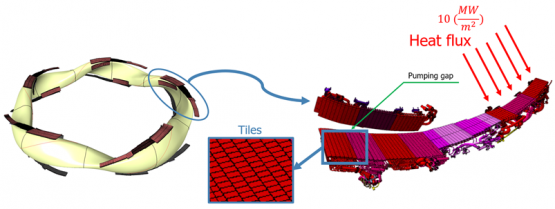
Figura 1. Composition of one divertor unit
The first design, created by Eleonora Gajetti and Cecilia Piatti, is a tile of 100 mm x 100 mm x 20 mm (Figure 2). A Gyroid TPMS structure has been designed in three different configurations, and several simulations have been performed to assess the influence of inlet/outlet locations as the use of double in/out or single in/out. In particular, the analysis has been focused on the comparison of the sheet-Gyroid (Figure 2b) and the solid-Gyroid (Figure 2d), and then the performance assessment of the sheet-Gyroid with the same parameters but inclined by 45° (Figure 2c) concerning the tile normal direction. Considering the operating conditions, 50 (l/min) of subcooled water at 300 (K) and 0.75 (MPa) at the outlet have been imposed as boundary conditions.
The difference between sheet and solid-TPMS resides in the fact that the first one has a higher heat exchange surface at the same porosity and can also be employed as heat exchanger, since it creates two, not crossing, different channels. On the other hand, the solid-TPMS, being more compact, might be more easily manufactured and has better mechanical properties. The tile equipped with sheet-Gyroid 45° has revealed to have the best cooling performances with a pressure drop of 3 (bar).
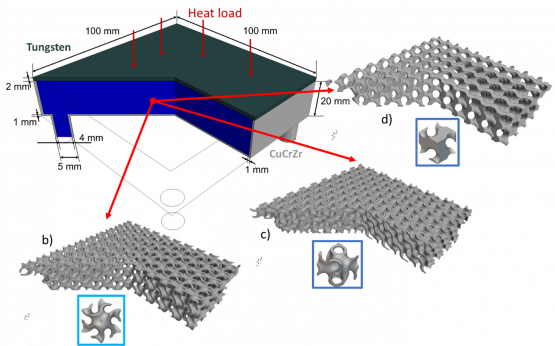
Figura 2. (a) Section and outline of the tile under investigation, with four inlet/outlet pipes. The solid domain of the gyroid layout sheet-Gyroid, sheet-Gyroid 45° and solid-Gyroid are shown in (b), (c) and (d), respectively.
Considering the pressure drop obtained, the design has been changed by Alessio Quamori Tanzi to take advantage of all the available pressure drop for the module. The base-area of the tile have been increased to 300 mm x 100 mm, with a height reduced from 20 mm to 5 mm (Figure 3). The reduction in height increases the velocity of the coolant and consequently the pressure drop, therefore, the height has been reduced until the pressure drop reaches 15 (bar). The new module is then composed of 8 tiles connected in parallel with 1.25 (kg/s) imposed at the inlet. The new tile design is shown in Figure 4. The tile has been equipped with a Diamond TPMS because, from a parametric study that investigated different types of TPMS, it has been revealed to have the best cooling capacities with contained pressure drop. [5]
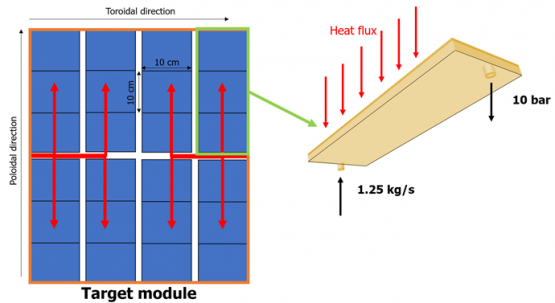
Figura 3. Target module
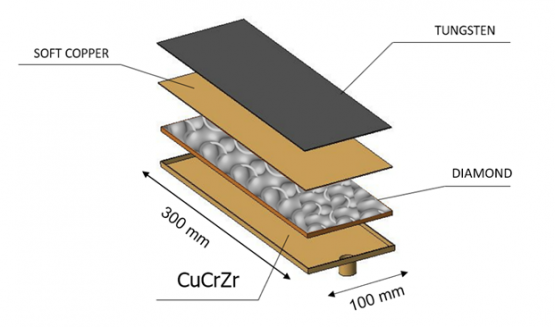
Figura 4. New tile design
The new design has revealed to sustain 10 (MW/m^2) without boiling with a pressure drop below the limit, while respecting the constraints on the maximum temperature of the materials.
At the moment, new designs are under development trying to reach 15 (MW/m^2).
References:
[1] Wanner M, Feist JH, Renner H, Sapper J, Schauer F, Schneider H, et al. Design and construction of WENDELSTEIN 7-X. Fusion Engineering and Design 2001.
[2] Wolf RC, Beidler CD, Dinklage A, Helander P, Laqua HP, Schauer F, et al. Wendelstein 7-X Program - Demonstration of a Stellarator Option for Fusion Energy. IEEE Transactions on Plasma Science 2016.
[3] Llewellyn Smith C, Ward D. Fusion. Energy Policy 2008.
[4] You JH, Mazzone G, Visca E, Greuner H, Fursdon M, Addab Y, et al. Divertor of the European DEMO: Engineering and technologies for power exhaust. Fusion Engineering and Design 2022;175.
[5] Hong Xu, Wenhui Yu, Yuan Zhang, Suli Ma, Zhiyuan Wu, Xiaohu Liu, Flow and heat transfer performance of bionic heat transfer structures with hybrid triply periodic minimal surfaces. (2023)
[6] Joris Fellinger et al. (2022), Tungsten based divertor development for Wendelstein 7-X

